Every August, since 1966, Notting Hill, London, transforms for two days. Dancers in vibrant costumes perform to blaring sound systems in a parade that snakes its way along the crowded streets of the West London district. Come rain or shine, the event always draws huge crowds; in 2018, almost two million people descended on the area to participate in the festival. “This project aims to celebrate the artistry, passion, and weeks of hard work that go into making the event happen each year,” says filmmaker and photographer Buster Grey-Jung, who spent time with several groups of performers ahead of Notting Hill Carnival 2018. The resulting project, comprising a series of photographs and a short documentary, seeks to reveal what takes place in the lead up to the event.
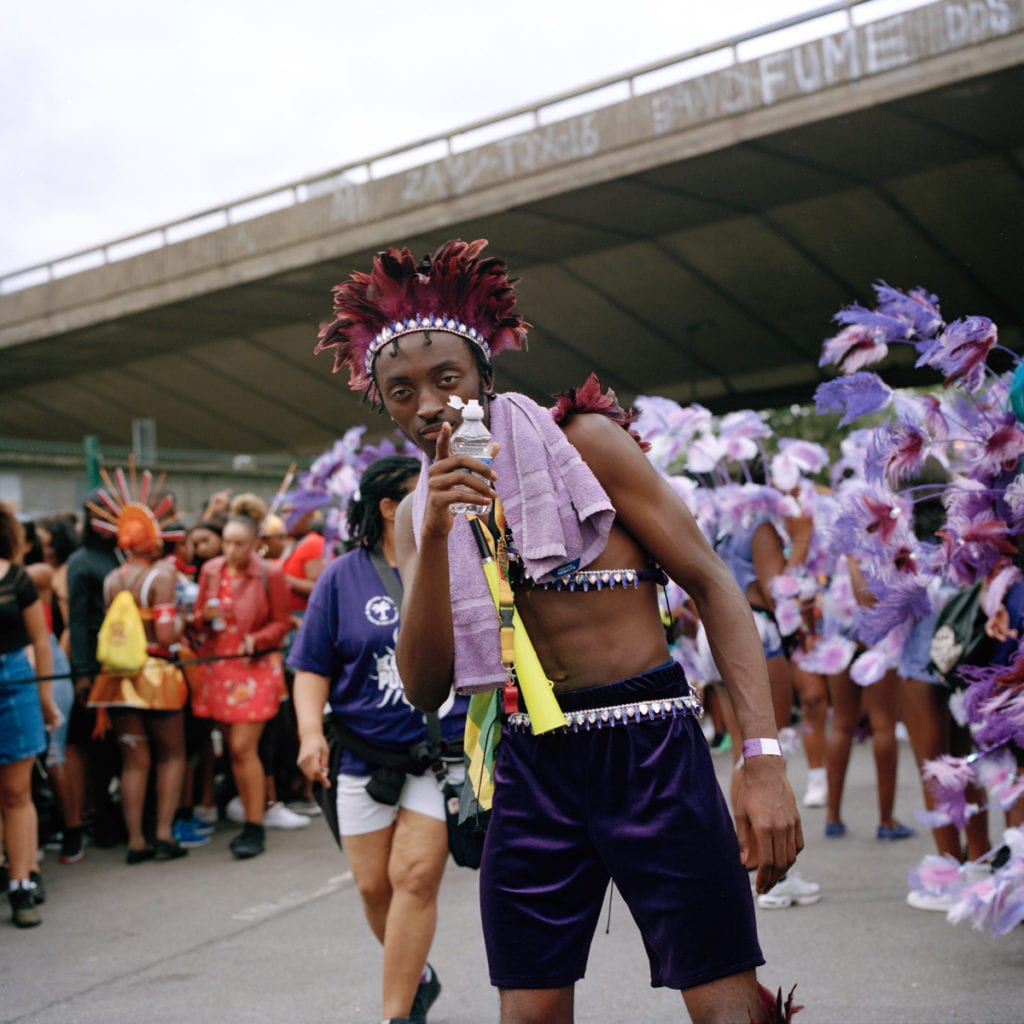
“I remember being in a gymnasium during a rehearsal by the London School of Samba and getting a call telling me that the Origin Moko Jumbies [a Mas band] were testing their stilted outfits in Westbourne Park”
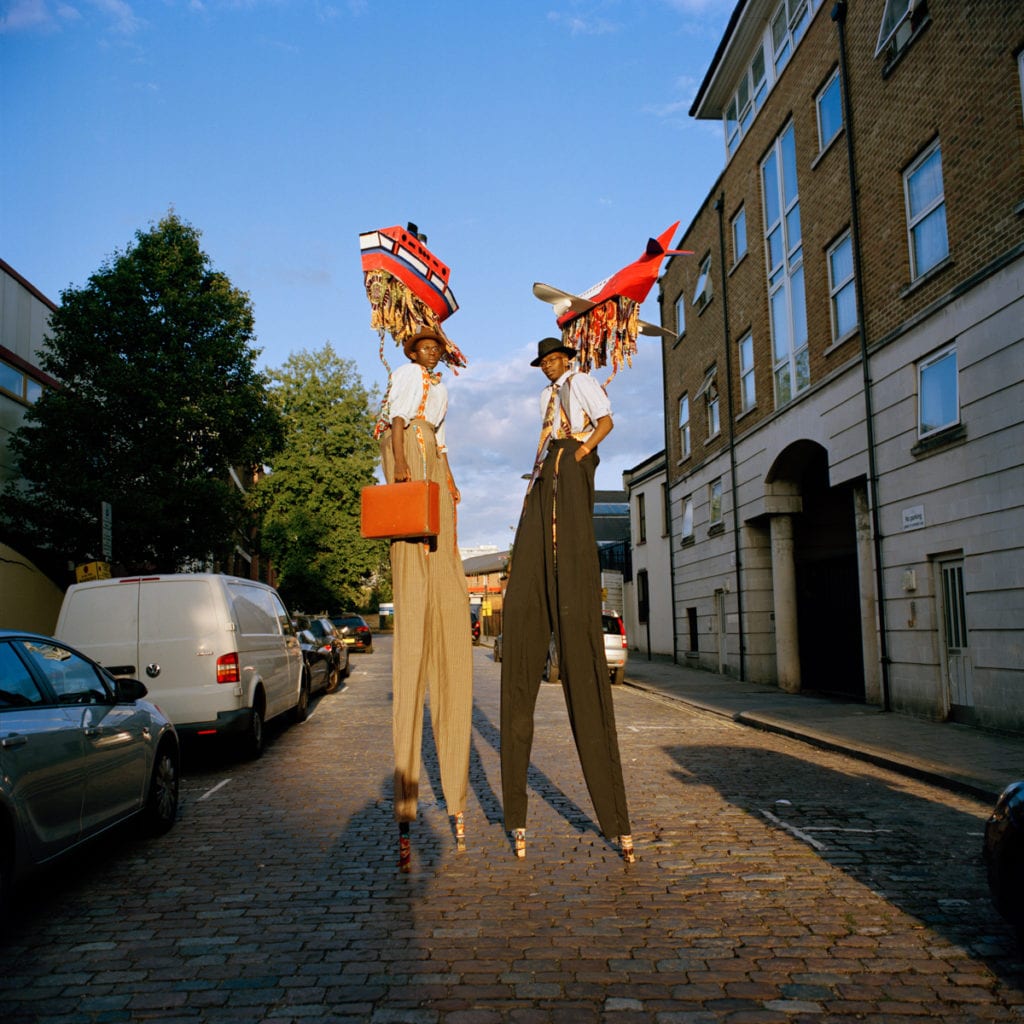
An early version of Notting Hill Carnival was conceived in 1959, as a response to the precarious race relations of the time, specifically the 1958 Notting Hill race riots. Seven years later, a second event was organised to promote cultural unity in the area, which gradually developed into the outdoor festival we know today. Notting Hill Carnival was originally much smaller but became a major festival in the mid-1970s when a Carnival Development Committee was established to secure funding and expand the event. It was around this time that the groups participating in the parade also diversified, with the involvement of more steel bands, reggae groups, costumes bands and traditional masquerade. Notting Hill Carnival has continued to grow and diversify, drawing participants and audience members from a global community.
Mas bands are central to the parade and comprise groups of masqueraders in elaborately themed costumes who dance through the streets. The art form originated from slaves in the Carribean who ridiculed their masters. Following the abolition of slavery, the practice continued, developing into Carribean carnival. Mas bands appeared at Notting Hill Carnival from the 1960s onwards.
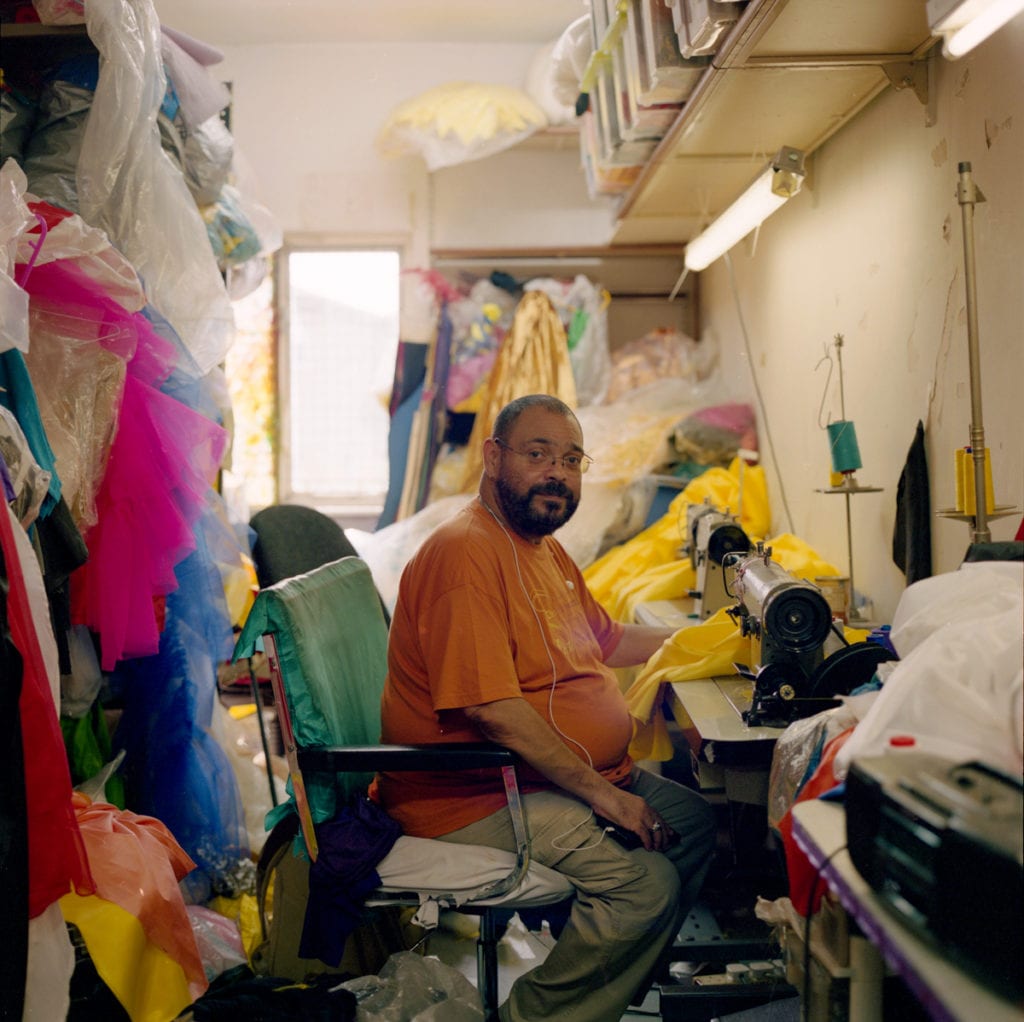
Notting Hill Carnival further diversified in 1984 with the appearance of the London School of Samba, representative of African and Brazilian carnival culture, which was born in Bahia in the eighteen hundreds after African slaves were emancipated there. Today there are more than 70 participating bands; some retain the traditional mas aesthetic, while others innovate and build on it, redefining mas for the modern age. “Many of the designers produce impressive costumes with their own unique flair and identity, blending traditional styles with modern themes and ideas,” says Grey-Jung.
Grey-Jung was galvanised to create the project after he realised that many of the communities were struggling with funding cuts. “A lot of people do not realise that many of the traditional Mas bands and Brazilian bands are charities or small businesses that provide year-round activities that nurture the artistic skills and creativity of their members,” he says. “It’s crazy that there is not a greater appreciation for the important, positive outreach work that these groups do in maintaining their rich cultural heritage.” Some groups also struggle to afford the high material costs of creating traditional costumes, and the Carnival itself faces the threat of relocation due to gentrification. “It is important to keep it in the streets where it began — connected to the heart of the community,” says Grey-Jung.
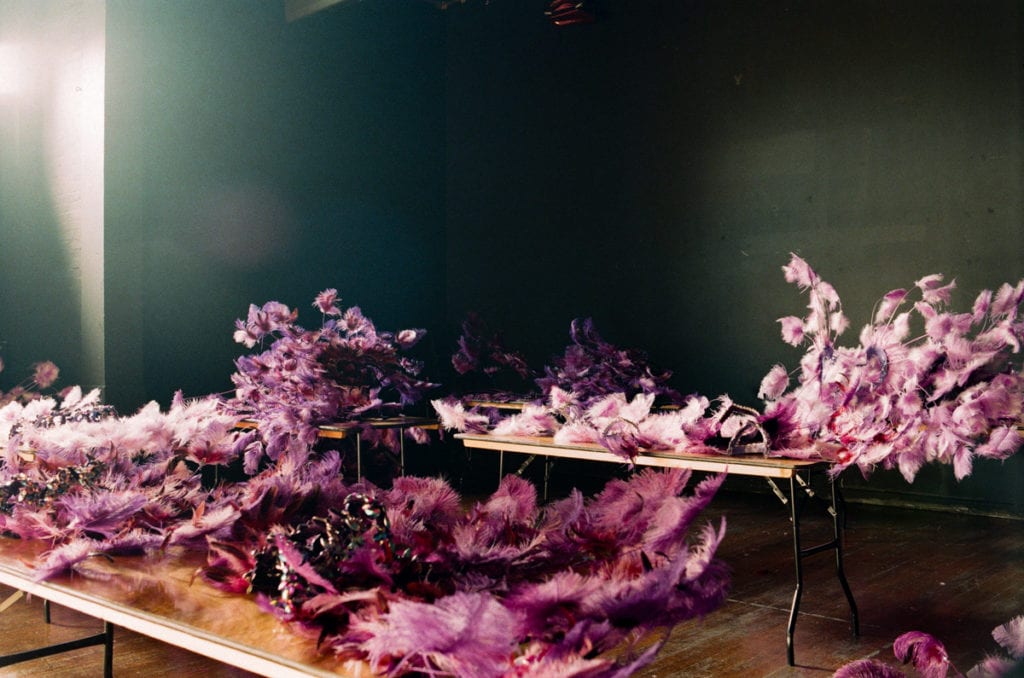
Moments that are “seemingly calm in the chaos and capture instances of focus, joy or mastership from the individuals or groups”
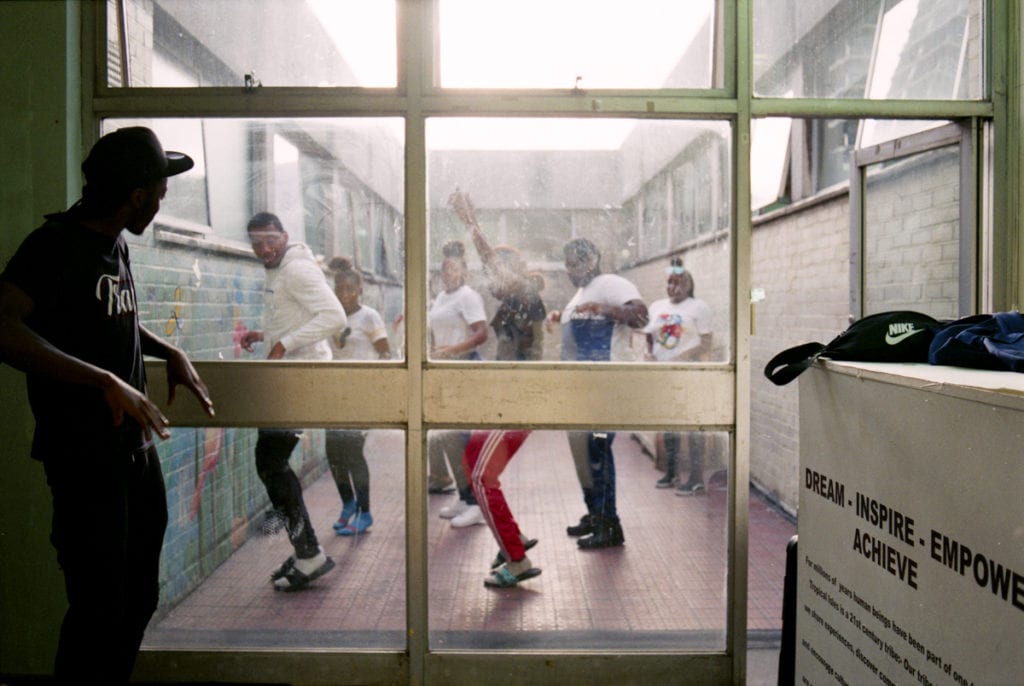
Vibrant images of the parade in full-swing dominate the mainstream media, so the photographer was keen to present an alternate depiction of it. Grey-Jung was particularly drawn towards capturing the “‘between states where aspects of carnival culture seep into everyday life … — the vibrant, imaginative costumes and energetic dance routines, juxtaposed with everyday clothing in old community centres.” Stepping into the camp of the first group he visited, Grey-Jung remembers the atmosphere: “Piles of purple feathers and sequins were being constructed in one room while dancehall blared out in the courtyard for rehearsals”. The photographer was immediately hooked, drawn in by the community spirit. “Just as the light was fading, a group of dancers were rehearsing in the courtyard space and the glass acted as an interesting framing device,” he remembers. “The mood was playful and animated, there was infectious energy and I realised there were important stories to explore.”
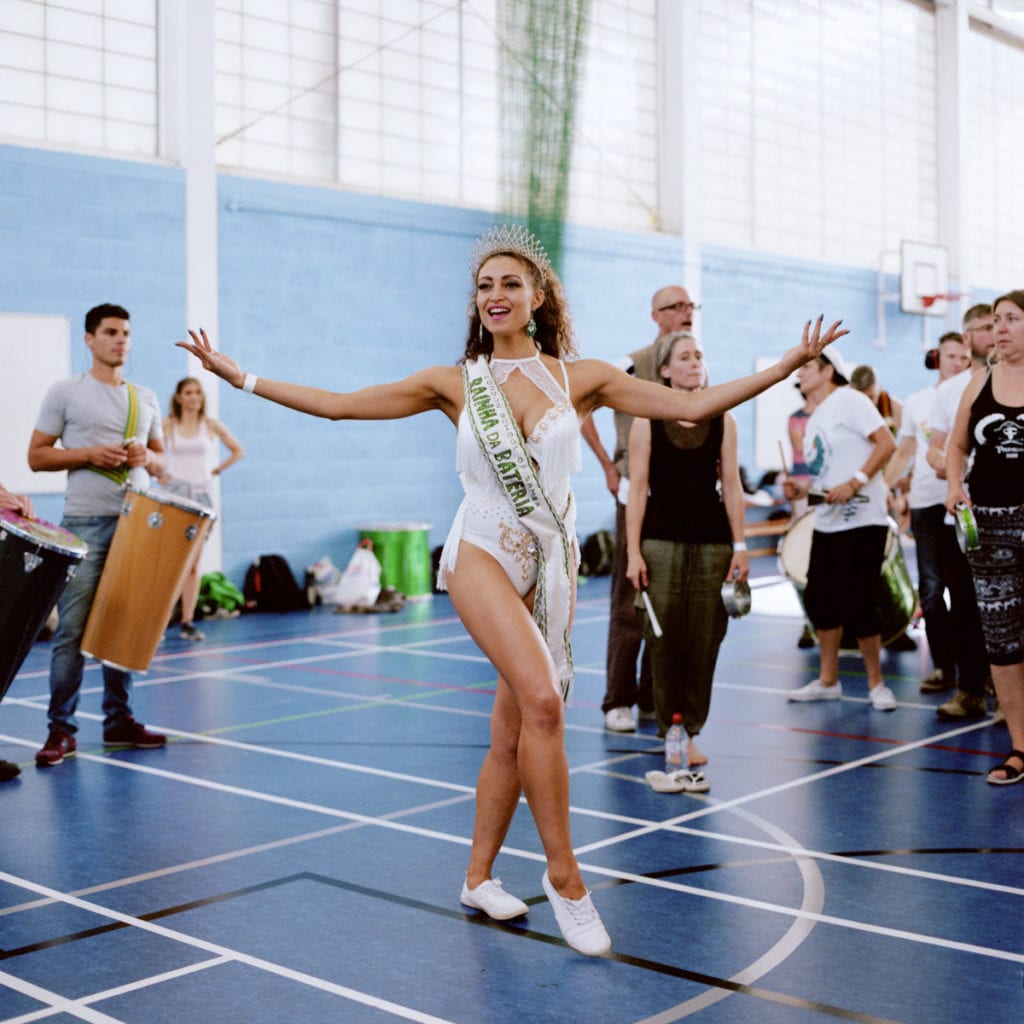
The project evolved from there, with Grey-Jung immersing himself in the flurry of activity leading up to Notting Hill Carnival 2018. It was difficult to plan and the photographer would find himself rushing across the city to attend various rehearsals and fittings. “I remember being in a gymnasium during a rehearsal by the London School of Samba and getting a call telling me that the Origin Moko Jumbies [a Mas band] were testing their stilted outfits in Westbourne Park,” he remembers. “I rushed over just as the sun was cutting through the streets and captured some of my favourite shots of the series.”
Grey-Jung initially conceived of the project as a photo series, but soon realised that a film would provide an additional dimension. “The film provides a broader social and political context,” he says, “you are able to hear the interviews and be immersed in the scene in a different way to that of photography.” The documentary captures the intense atmosphere of the weeks in the lead up to the event, while the individual stills act to frame poignant moments. Moments that are “seemingly calm in the chaos and capture instances of focus, joy or mastership from the individuals or groups,” says Grey-Jung.
